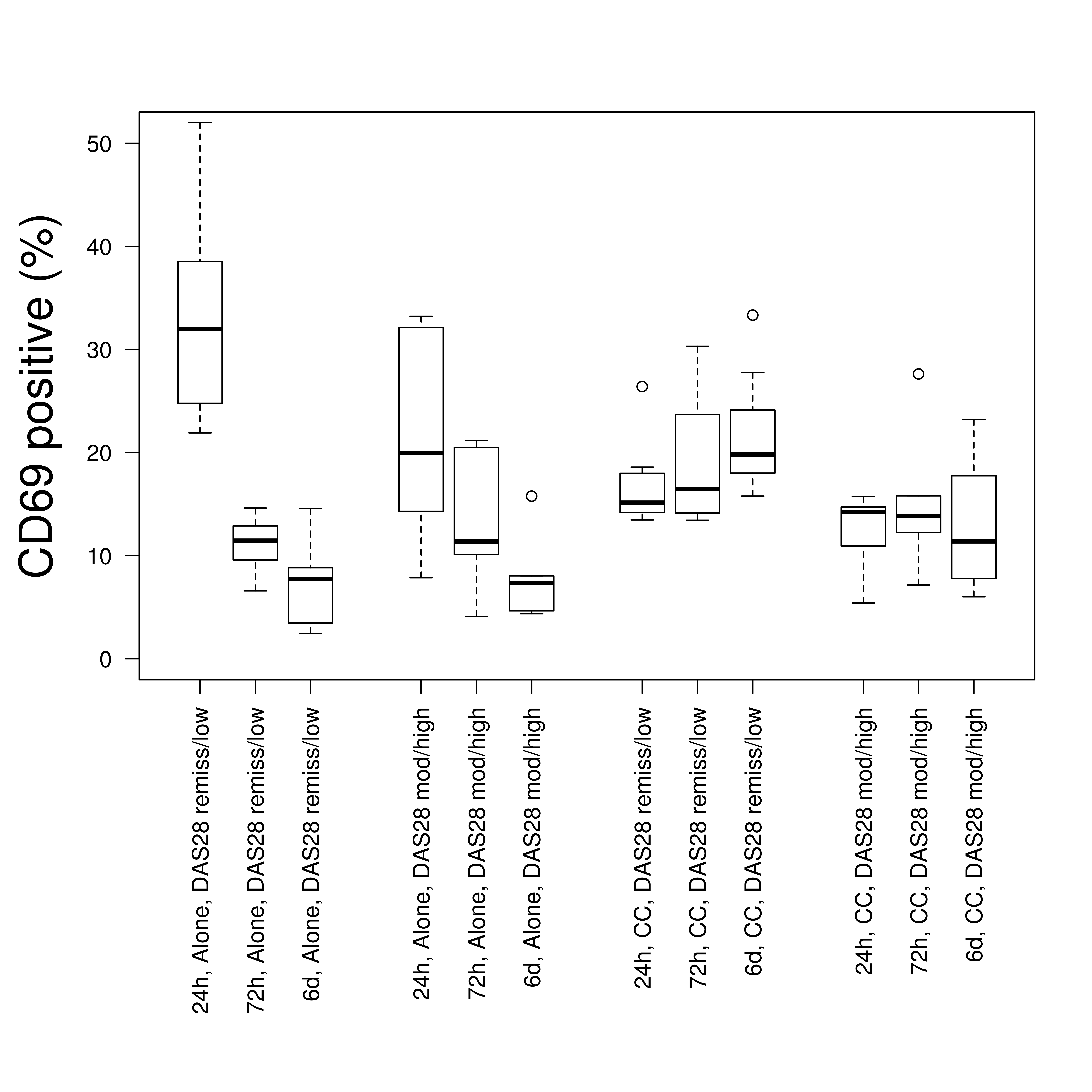Session Information
Date: Tuesday, November 7, 2017
Title: Rheumatoid Arthritis – Human Etiology and Pathogenesis Poster III
Session Type: ACR Poster Session C
Session Time: 9:00AM-11:00AM
Background/Purpose:
To analyze the effect of demographic and clinical related characteristics of rheumatoid arthritis (RA) patients in the immunomodulatory effects of mesenchymal stem cells (MSCs). The proportion of CD69+, CD25+, and regulatory T cells (Treg) among CD4+ peripheral blood mononuclear cells (PBMCs) was used as surrogate markers of immunomodulation.
Methods:
RA patients: Consecutive patients diagnosed with RA according to the 2010 ACR/EULAR criteria attending from the Hospital Clínico San Carlos Rheumatology Outpatient Clinic. Demographic and clinical data was collected, including a Disease Activity Score of 28 joints (DAS28). PBMCs were isolated from fasting venous blood using density gradient centrifugation.
MSCs donors: MSCs were obtained from bone marrow aspirates from the iliac crests of 6 healthy donors. Cells in the fourth passage were used in the experiments.
Co-cultures: PBMCs were cultured alone or with MSCs (1 MSC:10 PBMCs) for 24h, 72h and 6 days. PBMCs were stimulated using CD3/CD28 coated beads (1 bead:4 PBMCs).
T cell cytometry: PBMCs were stained with anti CD4, anti CD25, anti CD69, and anti CD127 antibodies. The lymphocyte population was identified by side scatter/forward scatter. Treg cells were gated on the basis of CD4 expression, in combination with higher (bright) expression of CD25 and low/negative expression of CD127.
Statistical analysis: Influence of co-culture with MSCs and duration of culture in surface markers expression and Treg proportion was analyzed using repeated measures ANOVA (nested by RA patient) with the “lmerTest” R package. Coculture with BM-MSCs (yes/no) and time of culture (24h, 72h, 6 days) were the within-subject variables. An interaction between both was introduced in the analysis. Gender, age at inclusion, presence of RF, presence of ACPA, disease activity (DAS28-CRP: remission/low vs. moderate/high disease activity), current use of methotrexate, and current use of biological therapies were between subject variables. Triple interactions (adjusted by the BM-MSCs donor) among the within-subject variables and each between-subject variables were performed. P-values were adjusted using the FDR correction.
Results:
15 RA patients were collected. Interactions between co-culture and time were significant for CD69+, CD25+ and Treg proportion (p<0.0001 for each term). Only disease activity showed a significant interaction with time and co-culture in their influence in the proportion of CD69+ cells (p=0.003; Figure 1). In the post-hoc comparisons, patients in remission/low disease activity showed a higher expression of CD69 after 6 days of co-culture (p=0.017).
Conclusion:
The degree of disease activity could influence the effect of MSCs. In patients with lower disease activity could exert a greater immunomodulatory effect.
To cite this abstract in AMA style:
Fernández-Gutiérrez B, Lamas JR, Lopiz Y, Lajas C, Alcazar LA, Rodriguez-Rodriguez L. Immunomodulatory Effects of Bone-Marrow Mesenchymal Stem Cells in Rheumatoid Arthitis: Influence of Disease Activity [abstract]. Arthritis Rheumatol. 2017; 69 (suppl 10). https://acrabstracts.org/abstract/immunomodulatory-effects-of-bone-marrow-mesenchymal-stem-cells-in-rheumatoid-arthitis-influence-of-disease-activity/. Accessed .« Back to 2017 ACR/ARHP Annual Meeting
ACR Meeting Abstracts - https://acrabstracts.org/abstract/immunomodulatory-effects-of-bone-marrow-mesenchymal-stem-cells-in-rheumatoid-arthitis-influence-of-disease-activity/

